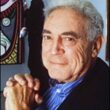John Marin
Description
More Details
Published Reviews
Choice Review
Despite the essential importance of John Marin (1870-1953) to the early history of American modernism, there has been a surprising paucity of literature published on his art and life--except for periodical articles and gallery/dealer exhibitions--during the two decades since Carl Zigrosser's The Complete Etching of John Marin: Catalogue Raisonne (1969) and Sheldon Reich's two-volume John Marin: A Stylistic Analysis and Catalogue Raisonne (CH, Jan'71). As Zigrosser's work has relatively little text and Reich's book contains omissions and the cropping of virtually every image--only seven of which are in color--it is with distinct pleasure that one welcomes the appearance of Fine's substantial monograph. Serving as the catalog for the 1990 exhibition, "Selections and Transformations: The Art of John Marin," at the National Gallery, John Marin presents a solid, energized, and thoughtful text--complementing well Marin's images--and 300 reproductions, 175 in color, dealing with 125 oil paintings, prints, watercolors, and drawings. Concentrating on both biographical and stylistic investigations, Fine has used many revelatory photographs and tapped previously unused family archival material. With a detailed chronology, annotated selected bibliography, and detailed index, this is simply the best publication on this important artist to date, and should appeal to a wide audience. J. Weidman Oberlin College
Booklist Review
Presented in conjunction with a current exhibition at the National Gallery of Art in Washington, D.C., this volume offers a thorough reconsideration of Marin's reputation and influence. While Marin was always accorded attention as a supreme painter of watercolor landscapes, both by the general public and the connoisseur, curator Fine goes well beyond this perception to explore all the media in which Marin worked. Using works, sketchbooks, and correspondence given to the museum by the Marin family, this volume reconstructs the artist's life and career and illuminates the ways Marin treated his subjects and experimented with the techniques of many media in addition to watercolors and oils. The outstanding illustrations offer a survey of Marin's works, covering both familiar paintings and a large number of items that will cause viewers to rethink their conception of Marin's role as a romantic modernist. Notes, chronology, and bibliography; index. --John Brosnahan
Publisher's Weekly Review
John Marin (1870-1953) brought a transparency and poise to watercolor that were new to American art. The catalogue of an exhibit of his oils, drawings, watercolors and etchings at the National Gallery of Art, this lavish biographical-critical tribute samples the many sides of Marin. There is the restless modernist--member of the circle of artists around photographer Alfred Stieglitz--whose staccato grids of interlocking lines and planes gave new meaning to the Brooklyn Bridge, pulsing city life or a seascape. There is the romantic lyricist, as seen in an exquisite pastel of Venice. There is the nature-worshipper whose celebration of unspoiled Maine almost amounts to an environmental statement. And there was the experimentalist who anticipated abstract trends. Easily dismissed as a painter's painter, Marin recorded flashes of illumination that instill hope and joy. Fine, a curator at the National Gallery, writes with perception of Marin's vision. (Mar.) (c) Copyright PWxyz, LLC. All rights reserved
Library Journal Review
For a major exhibition this spring at the National Gallery, Fine has produced a handsome catalog of John Marin's art. A selection from 3000 works in the Marin Archives at the National Gallery are included, some recent gifts of the Marin family; their linear, rhythmic qualities particularly lend them to graphic representation. Carefully reproduced, the 175 color and 125 black-and-white illustrations embrace watercolors, drawings, etchings, and oils spanning a prolific career of over 40 years. Skillfully combining the biographical and the critical, and frequently quoting Marin himself, the footnoted text is a readable and authentic survey that will serve the novice and scholar alike. A detailed chronology and annotated bibliography increase the usefulness of this book, which is further enhanced by family photographs. An excellent starting point for studying Marin, this is recommended for school, university, public, and museum collections.-- Ellen Bates, New York (c) Copyright 2010. Library Journals LLC, a wholly owned subsidiary of Media Source, Inc. No redistribution permitted.
Library Journal Reviews
For a major exhibition this spring at the National Gallery, Fine has produced a handsome catalog of John Marin's art. A selection from 3000 works in the Marin Archives at the National Gallery are included, some recent gifts of the Marin family; their linear, rhythmic qualities particularly lend them to graphic representation. Carefully reproduced, the 175 color and 125 black-and-white illustrations embrace watercolors, drawings, etchings, and oils spanning a prolific career of over 40 years. Skillfully combining the biographical and the critical, and frequently quoting Marin himself, the footnoted text is a readable and authentic survey that will serve the novice and scholar alike. A detailed chronology and annotated bibliography increase the usefulness of this book, which is further enhanced by family photographs. An excellent starting point for studying Marin, this is recommended for school, university, public, and museum collections.-- Ellen Bates, New York Copyright 1990 Cahners Business Information.
Publishers Weekly Reviews
John Marin (1870-1953) brought a transparency and poise to watercolor that were new to American art. The catalogue of an exhibit of his oils, drawings, watercolors and etchings at the National Gallery of Art, this lavish biographical-critical tribute samples the many sides of Marin. There is the restless modernist--member of the circle of artists around photographer Alfred Stieglitz--whose staccato grids of interlocking lines and planes gave new meaning to the Brooklyn Bridge, pulsing city life or a seascape. There is the romantic lyricist, as seen in an exquisite pastel of Venice. There is the nature-worshipper whose celebration of unspoiled Maine almost amounts to an environmental statement. And there was the experimentalist who anticipated abstract trends. Easily dismissed as a painter's painter, Marin recorded flashes of illumination that instill hope and joy. Fine, a curator at the National Gallery, writes with perception of Marin's vision. (Mar.) Copyright 1990 Cahners Business Information.


















